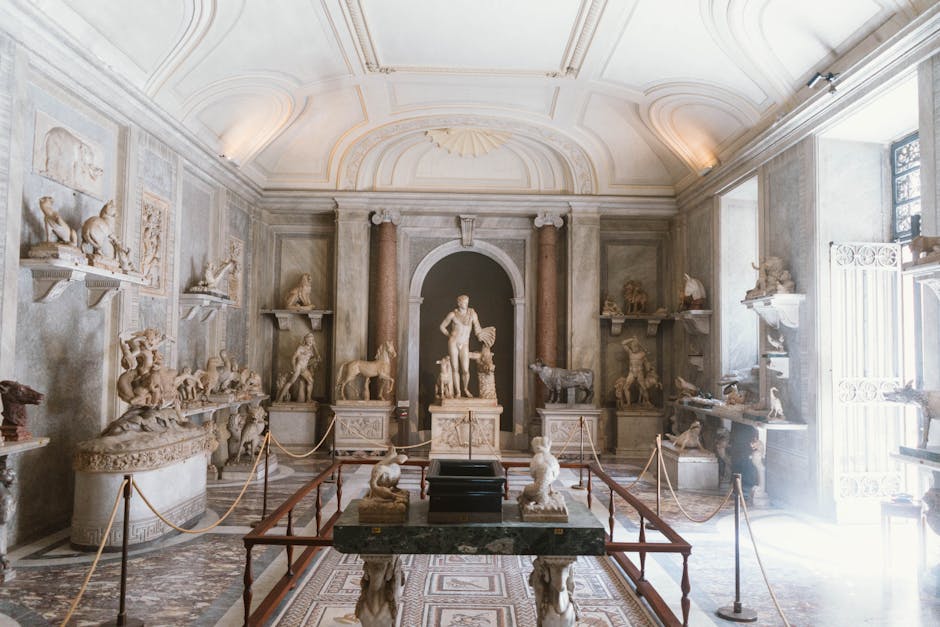Echoes of the Past: How Artifacts in Gaming Shape Perspectives
Video games have often been described as modern-day myths. They transport us to fantastical realms, invoke emotions, and allow us to explore experiences beyond our reach. Within this digital ecosystem, historical artifacts play a pivotal role in shaping cultural identity and player perspective. From ancient weaponry to monumental architecture, the integration of historical narratives in gaming influences how players understand their own history, culture, and identity. In this article, we’ll embark on a journey through the intricate tapestry of gaming history while analyzing various titles that skillfully weave actual historical elements with their own unique lore.
The Resonance of Real-World History in Gaming

Video games are more than just entertainment; they serve as vehicles for cultural storytelling. They can reflect, distort, and even redefine our understanding of history. As players engage with these narratives, they often encounter various artifacts that have drifted through time, connecting them with real-world events and figures. Game developers are increasingly aware of their responsibility when portraying historical elements.
For example, titles like Assassin's Creed and Civilization offer players a comprehensive look into different epochs, cultures, and histories. Meanwhile, games such as Murdered: Soul Suspect touch on cultural identities and histories relevant to specific locales. Players find themselves nestled in historic settings that bridge generational gaps—making history feel alive. As Dr. Anthony DiMarco, a historian specializing in the cultural impact of media, states, “Games like these breathe new life into our understanding of history, allowing players not just to witness but experience it.”
Case Study: The Assassin’s Creed Series

One stark example of historical integration is found in Ubisoft's Assassin's Creed franchise. Each game transports players to a meticulously crafted historical landscape. From ancient Egypt to Renaissance Italy, players can explore national landmarks, meet historical figures, and unravel the narratives woven into these timelines. In Assassin's Creed: Origins, for instance, players can immerse themselves in the vivid culture of Ptolemaic Egypt, experiencing both the daily life of its citizens and larger political intrigues.
This series has sparked debates regarding historical accuracy versus creative liberty. Game designer Ashraf Ismail explained in an interview how the development team collaborates with historians to ensure accuracy while also crafting a captivating narrative. He noted, “Our goal is to present distilled truths of the period that resonate with gamers’ experiences and expectations.”
Historical Artifacts as Cultural Touchstones

What’s particularly compelling about historical artifacts in gaming is their ability to act as touchstones for cultural identity. These artifacts can encourage players to explore their roots with renewed vigor, igniting interest in learning more about their cultural background. Take God of War (2018) as an example; players traverse Norse mythology, grappling with themes of fate, honor, and legacy. The artifacts players discover not only enhance the gameplay experience but also serve to engage them with their ancestral myths, thereby fostering a connection to forgotten narratives.
In a world increasingly aware of its diversity, the representation of these historical narratives can inspire inclusivity in gaming culture. Dr. Melissa Sorenson, who studies the intersection of history and digital media, emphasizes the role of these artifacts as cultural bridging tools. She mentions, “These experiences help demystify histories often overlooked, encouraging players to share their own stories, creating a more layered understanding of identity.”
Weaving Real and Fictional Histories

While historical accuracy is vital, the blending of true events with fictionalized plots can yield powerful narratives. The Witcher 3: Wild Hunt offers a striking example, with its lore deeply embedded in Slavic mythology yet infused with an original storyline that reflects modern themes such as xenophobia and war. The game invites players to ponder questions about morality, choice, and consequence, invoking reflections on real-world issues.
Many players might not recognize the historical connections immediately, but they subconsciously absorb these lessons through gameplay. It’s a process of engagement rather than passive learning—players aren’t just reading textbooks; they’re living stories. The balance of historical elements with imaginative storytelling allows players to apply lessons learned in-game to their real life.
Interviews with Luminaries: The Developer Perspective

Engaging conversations with game developers reveal their thoughtful approach to integrating historical artifacts. Many emphasize that the emotional resonance of their stories often stems from their historical context.
Game director Celia O'Dwyer of Kings and Heroes shared her thoughts on incorporating history: “While we design these narratives, we aim to create a space where players can experience history emotionally. They may fight dragons, but at their core, those stories are about valor, sacrifice, and choice—timeless themes rooted in our history.”
Meanwhile, historian Dr. Samuel Albright emphasizes the responsibility developers carry: “When portraying sensitive historical topics—like war or oppression—developers must tread carefully. Artifacts should inform and educate without trivializing the experience.”
The Educational Potential of Gaming

The intersection of gaming and history isn't just about storytelling; it holds great educational potential. Educational institutions are increasingly utilizing video games as teaching tools. Titles like Assassin’s Creed: Discovery Tour allow players to explore historical settings without the pressure of gameplay, imparting valuable knowledge about different cultures and histories.
Players emerge from these experiences with a richer understanding of the world around them. A study conducted by the International Journal of Educational Technology found that students who engaged with educational games showed improved retention of historical facts compared to traditional methods. Steven Collins, an educational technologist, notes, “Games can be gateways. They can ignite curiosity and foster a desire to learn more about a period, a culture, or a socio-political movement.”
Navigating Ethics in Historical Representation

Despite the positive aspects of historical integration in gaming, there exists a spectrum of ethical considerations. There’s a delicate dance between creatively interpreting history and delivering an authentic experience. Developers must confront the dilemma of representing potentially sensitive events, ensuring ethics and cultural sensitivity are prioritized.
In 2025, as the gaming industry continues to evolve, this challenge will only sharpen. As opportunities emerge for augmented reality (AR) and virtual reality (VR) technologies in gaming, the responsibility placed on developers will grow. Players will demand a more immersive experience that accurately reflects cultural narratives and histories.
This brings us to an important question: How can developers balance creativity with responsibility? One approach is through collaborative partnerships with historians that can offer insights into representation. Embracing diverse perspectives not only enriches the gaming experience but also respects the multifaceted nature of our shared histories.
Final Thoughts: Bridging the Past and Present
The role of historical artifacts in gaming is a multifaceted one, serving as both educational tools and bridges to personal exploration. As players step into the shoes of explorers, warriors, or rulers, they engage not only with fictional narratives but also with the echoes of real-world history. Games offer a unique perspective, allowing an examination of identity and culture through the lens of play.
As we witness the evolution of gaming narratives and mechanics, the potential for education and connection through historical representation is boundless. By fostering responsible storytelling alongside rich, immersive environments, video games can lead players on an enlightening journey through the annals of history—one where cultural identity and player perspective intertwine deeply.
By taking inspiration from existing narratives and developing new ones, game developers have the power to craft experiences that do more than entertain; they educate and inspire players to reflect on their own histories. So, as we continue to push boundaries within the gaming industry, let us remember to allow the past to echo through the pixels, enriching present experiences and future generations.



